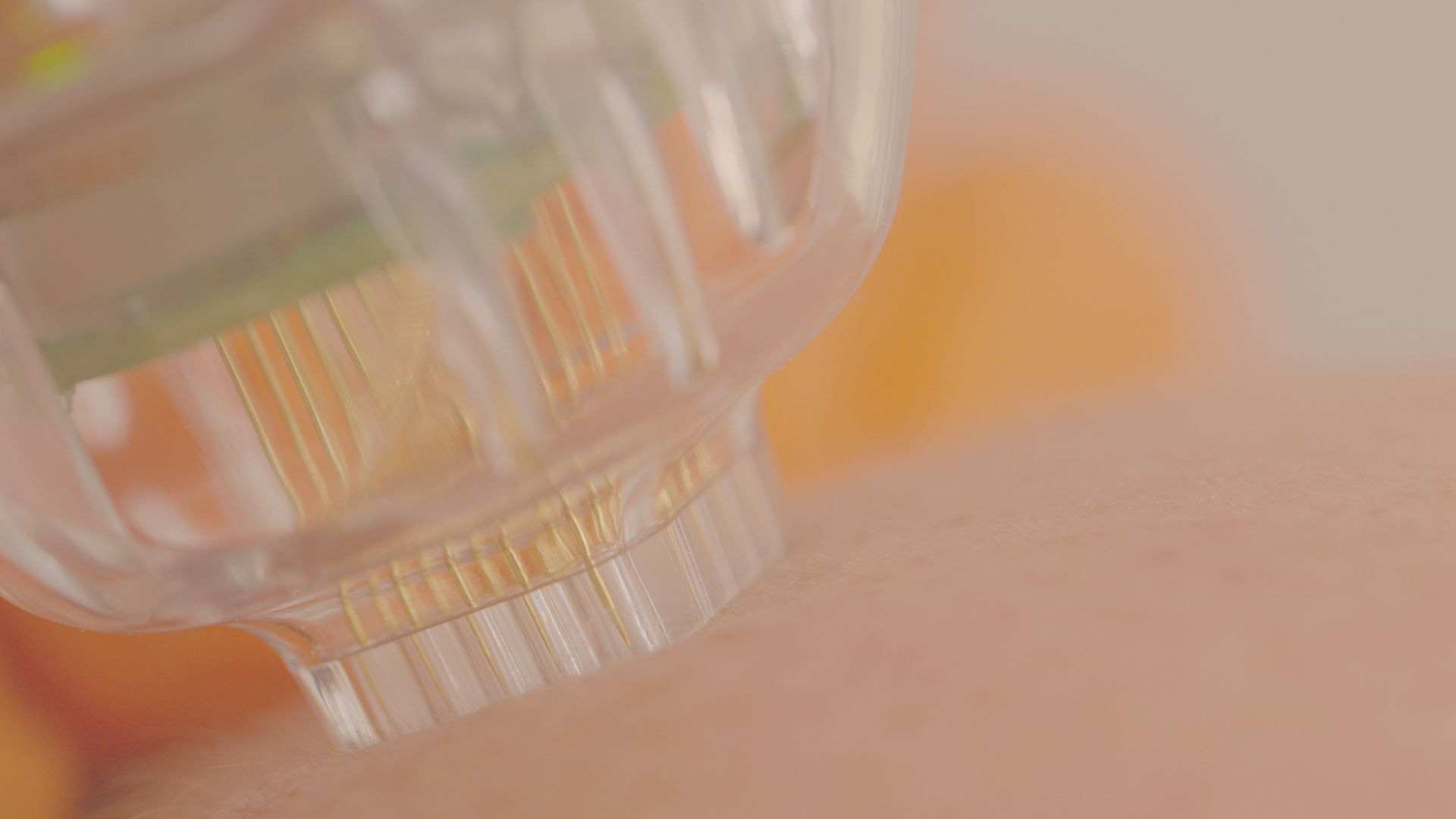What Is Microneedling?
Microneedling is a cosmetic procedure that involves the use of a device containing fine needles to create controlled micro-injuries in the skin. Also known as collagen induction therapy, microneedling is used to stimulate the body's natural wound healing processes, leading to the production of collagen and elastin—proteins that contribute to the skin's structure, firmness, and elasticity.
Here's a more detailed overview of microneedling:
Procedure: During a microneedling procedure, a dermatologist or trained skincare professional uses a microneedling device, which can be a dermaroller or a motorized pen-like instrument. The device contains tiny needles that range in length, typically between 0.5 to 2.5 millimeters.
Micro-Injuries: As the device is gently rolled or pressed onto the skin, the needles create microscopic punctures. These controlled micro-injuries trigger the body's natural healing response, leading to the formation of new collagen and elastin.
Stimulation of Collagen Production: Collagen is a crucial protein in the skin that provides structure and firmness. The micro-injuries induced by microneedling stimulate the fibroblasts in the skin to produce more collagen, helping to improve the skin's texture and reduce the appearance of fine lines, wrinkles, and scars.
Benefits:
Skin Rejuvenation: Microneedling is used for overall skin rejuvenation, promoting a more youthful appearance.
Scar Reduction: It can be effective in reducing the appearance of acne scars, surgical scars, and stretch marks.
Improved Texture: Microneedling can enhance the skin's texture and reduce pore size.
Increased Absorption of Topical Products: The microchannels created during microneedling allow for better absorption of topical skincare products, enhancing their effectiveness.
Post-Procedure Care: After microneedling, patients may experience redness and mild swelling, similar to a sunburn. Recovery time varies depending on the length of needles used. It's essential to follow post-procedure care instructions provided by the practitioner, including avoiding sun exposure and using recommended skincare products.
Professional vs. At-Home Devices: While professional microneedling is typically performed in a dermatologist's office or skincare clinic, there are also at-home microneedling devices available. However, at-home devices usually have shorter needles and may not offer the same level of precision and safety as professional treatments.
Microneedling has gained popularity for its potential benefits in skin improvement, but individual experiences can vary. It is important to consult with a qualified skincare professional or dermatologist to determine if microneedling is suitable for specific skin concerns and to ensure a safe and effective procedure.

